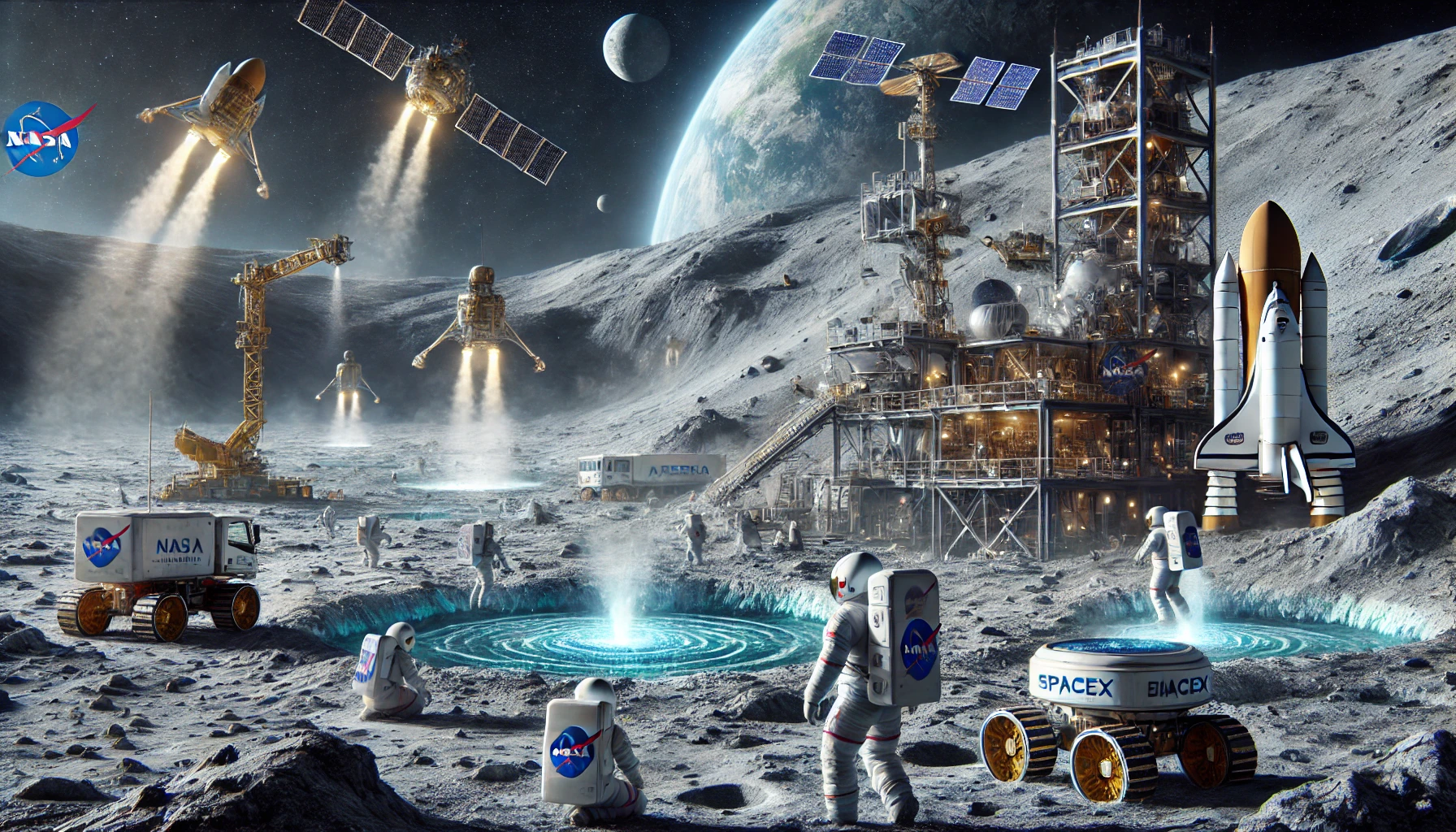Lunar Resource Extraction: The First Test Missions to Harvest Water on the Moon

The Lunar Gold Rush: Water is the New Oil
In the age of space exploration, the Moon is starting to look less like a barren wasteland and more like a potential goldmine. Well, more like a water mine, actually. With NASA and private companies like SpaceX and Blue Origin eyeing the Moon as the next big frontier, lunar water has become the most coveted resource. Why? Because water isn't just for drinking or growing some out-of-this-world moon potatoes. Nope, it’s a key ingredient for rocket fuel. Yup, H2O is the secret sauce for splitting into hydrogen and oxygen, and that’s what makes rockets go boom (in a good way, of course).
NASA's Artemis Program: A Splash of Innovation
Enter NASA’s Artemis program, which is planning to put boots on the lunar surface again, but this time with a mission to stay. And staying means sustainability. That’s where lunar water comes in. The Artemis missions are set to explore the Moon’s south pole, where water ice has been found in shadowy craters. The idea is simple: extract the water, use it to support life, and most excitingly, convert it into fuel for deeper space missions. Sounds easy, right? Well, extracting water from lunar soil is not as simple as turning on the tap. It’s more like trying to dig out an ice cube that’s been superglued to the freezer.
Private Companies Join the Lunar Water Hunt
Not to be left out, private companies are also joining the lunar water race. SpaceX, Blue Origin, and others are all planning to extract resources from the Moon in the near future. It’s like a cosmic Wild West out there, with everyone trying to claim their stake on the Moon's icy craters. In fact, there’s even talk of mining rights in space—how futuristic is that? With the first test missions already underway, we might soon see lunar resource extraction become a booming industry, with lunar water leading the charge. After all, who wouldn’t want to say they made their millions mining the Moon?
The Tech Behind Lunar Water Extraction
But how do you actually extract water on the Moon? One promising method is through heating the lunar regolith (that’s the fancy word for moon dirt) to release water vapor, which is then collected and condensed. It sounds like something straight out of a science fiction novel, but it’s actually based on solid engineering. Another approach is using robots to drill into icy craters and bring back water-rich samples. Companies like Astrobotic and Intuitive Machines are already developing lunar landers to help with these efforts. It’s a tough job, but someone's got to dig for water in space.
How This Impacts the Future of Space Exploration
So why all the fuss about lunar water? Simple: it could be the key to making space exploration sustainable. Imagine refueling a spacecraft on the Moon and then launching to Mars or even beyond. This concept, called in-situ resource utilization (ISRU), is a game-changer. It reduces the need to carry all supplies from Earth, making deep space missions more feasible and cost-effective. Plus, a steady supply of lunar water could support the creation of permanent lunar bases. Think of it as a cosmic rest stop, complete with water, fuel, and who knows, maybe even some snacks.
What’s Next for Lunar Water Harvesting?
With the first test missions in motion, the future of lunar water extraction looks promising. In the next few years, we’re likely to see more advanced technologies and robotic missions designed to pave the way for human settlement. There’s even speculation that lunar water could be the key to building entire lunar cities, providing the necessary resources for agriculture, industry, and everyday living. And with NASA’s goal of landing the first woman and next man on the Moon by 2025, the race to tap into the Moon’s water reserves is only heating up.
Will Lunar Water Be the Fuel of the Future?
As NASA, SpaceX, and other space agencies and companies continue to push the boundaries of lunar exploration, one thing is clear: the Moon is more than just a stepping stone. It’s a potential lifeline for future missions deeper into our solar system. But the big question remains—will we be able to unlock the Moon’s water potential? Only time will tell, but one thing’s for sure: the Moon isn’t just a dusty old rock anymore. It’s the future of space exploration, and the first test missions are just the beginning. So, what do you think—will lunar water fuel the next giant leap for mankind?



